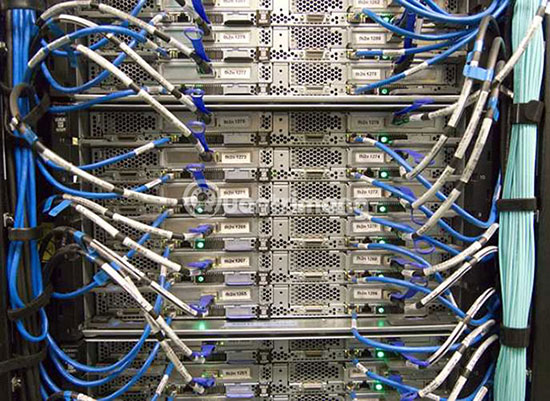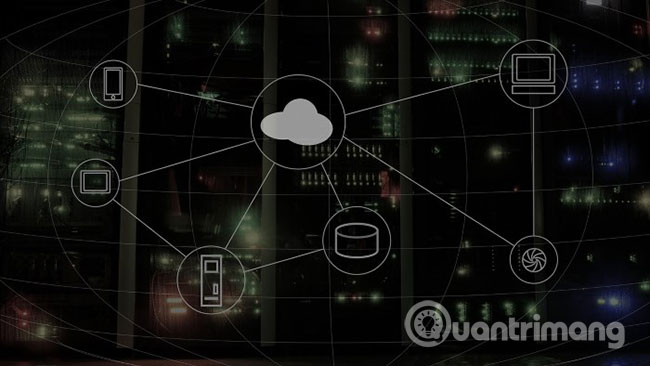What is Serverless Computing?
As we enter a world increasingly connected to the Internet, we will gradually see growth in the digital space, which helps people set up and run websites. One of the ways to develop this space is 'serverless computing'. Serverless computing is a means for developers to set up web-based services without any pressure like running a server.
In today's article, let's find out what Serverless computing is, and how to benefit.
Learn about Serverless Computing
- What is serverless computing?
- But isn't the cloud made up of servers?
- What benefits do Serverless computing bring?
- How does Serverless computing work?
- How to use serverless computing
What is serverless computing?

In the world where every person, every company and every service needs a website, web hosting needs to create a website that creates little pressure for users as possible. This is also the goal of serverless computing. By eliminating the server, users are less likely to worry when setting up their digital space.
Serverless computing does this by storing web pages in the cloud. This allows the server to customize the amount of resources that go into the site, allowing it to adapt to the needs of the client. Site creators no longer have to worry about setting up the server. Just create the website and let the cloud handle the rest.
But isn't the cloud made up of servers?

You may have noticed a strange thing in the past: Serverless computing requires the cloud to work. However, on the network, 'cloud' is a term referring to many servers connected to the Internet. So isn't serverless computing completely eliminating the server? This is why the name "serverless computing" is not very suitable for this service, since there is definitely a server that works in the background.
The concept of "serverless" here simply eliminates the server setup requirements for users. In this way, customers still experience a service without a server, despite the fact that servers are still heavily used to host websites.
What benefits do Serverless computing bring?

The main advantage that serverless computing brings is that it attracts less tech savvy customers but still needs to host the website. Serverless computing eliminates the need to manually adjust settings on the server, so customers can immediately access their website and pay only for what they are using.
However, serverless computing has an additional benefit for both customers and servers. How serverless computing works allows customers to pay for what they use. For example, you want to host the server for a game to play with friends. According to the old model, you will have to pay a monthly fee to hire a server.
However, under this cloud-based platform, you use the server to play games and pay only for the resources you use in the cloud. That means you only pay when you use the server.
How does Serverless computing work?
If you sign up for an option that doesn't have a server when you want to host a website, what happens on the other side, where your site is allowed to be hosted?
As the article discussed above, serverless computing will eliminate server management from users. This means that the server must calculate parameters such as storage space and memory itself (called 'Function-as-a-Service' or 'FaaS' ). When the cloud receives the code to run from the user, it will calculate how many resources are required for this. Then, the cloud will look at its servers and process the resources needed to run the process that it has just requested.
The server also needs to recognize when a process needs to be scaled up or down. If the server hosts a website that 'sees' visitors, it will automatically adjust and assign additional resources to this site. When that visitor thread disappears, the server can use fewer resources to keep the website online. Then it calculates how many resources have been used in a month and billed to the user.
How to use serverless computing
Typically, users interact with serverless computing with consoles. This allows users to design the functions they want the cloud to perform. Users will then call this function when they need to run the service and allow serverless computing to handle the rest.
It's easy for users to create and run a certain function. The biggest barrier is figuring out how to use the selected service interface to run a certain process. Once completed, you can perform the process and let the service handle the rest!
Although the name 'serverless computing' may be a bit confusing, the idea that this service offers is really great: Eliminating the end user having to interact with the server. Serverless computing brings all the benefits of hosting services without causing any problems with server settings, making it easier for businesses to get online.
Do you think 'serverless computing' is a suitable name for this technology? Do you have any more interesting suggestions? Leave comments in the comment section below!
You should read it
- Quantum computing - a marathon, not a sprint contest!
- Cloud computing - revolutionizing cheap computing with the Internet
- Quantum computing - the future of humanity
- Join Microsoft's free Quantum computing course today
- Cloud computing can develop in a relatively different direction in the next few years
- Learn about Cloud Computing
- The difference between AI (Artificial Intelligence) and Cognitive Computing (Cognitive Computing)
- New weapons against malicious code are 'cloud' computing.
May be interested
- Crowd computing
 the 'crowd-based' solution is not new, this is the foundation of open source software. but it is only known for the term 'crowdsourcing' (a combination of 'crowd' - 'crowd' and 'outsourcing') ...
the 'crowd-based' solution is not new, this is the foundation of open source software. but it is only known for the term 'crowdsourcing' (a combination of 'crowd' - 'crowd' and 'outsourcing') ... - What is spatial computing? applications of spatial computing
 what is spatial computing? how does it work and what are its applications? the article below tipsmake will answer for you!
what is spatial computing? how does it work and what are its applications? the article below tipsmake will answer for you! - Cloud computing transforms how to prevent viruses?
 many people believe that when cloud computing becomes big, security solutions and anti-virus running on personal computers will soon fall into the 'afternoon market'.
many people believe that when cloud computing becomes big, security solutions and anti-virus running on personal computers will soon fall into the 'afternoon market'. - What is quantum computing and how did people develop this technology?
 quantum computers promise to create a revolution in the digital world. however, how will humans harness energy from quantum mechanics?
quantum computers promise to create a revolution in the digital world. however, how will humans harness energy from quantum mechanics? - Even Bill Gates doesn't understand the algorithm behind quantum computing
 microsoft is betting a lot on quantum computing - the most modern technology area today to build a computer system more powerful than anything we've ever had before.
microsoft is betting a lot on quantum computing - the most modern technology area today to build a computer system more powerful than anything we've ever had before. - The future of computing lies in organic molecules?
 we all know that computers don't really 'live'. however, future computing devices may have real organic ingredients.
we all know that computers don't really 'live'. however, future computing devices may have real organic ingredients. - GPU rental service - The preeminent solution for professional 3d artists
 the birth & development of cloud computing technology (cloud computing) has opened up many development directions for the fields of science and technology, programming, computer graphics. thanks to that, today a home-sitting artist can also access a powerful configuration computer, through reliable, user-friendly protocols.
the birth & development of cloud computing technology (cloud computing) has opened up many development directions for the fields of science and technology, programming, computer graphics. thanks to that, today a home-sitting artist can also access a powerful configuration computer, through reliable, user-friendly protocols. - Microsoft and Oracle, along with the 'matching swords' against Amazon in the cloud computing battle
 microsoft and oracle - the two giant service providers of the cloud computing market - recently said they have reached an important joint cooperation agreement.
microsoft and oracle - the two giant service providers of the cloud computing market - recently said they have reached an important joint cooperation agreement. - New chip technology can enhance quantum computing
 an international research group, including chinese researchers, has demonstrated a large-scale integrated quantum optical circuit, which could pave the way for the production of giant components for a quantum computer. optics.
an international research group, including chinese researchers, has demonstrated a large-scale integrated quantum optical circuit, which could pave the way for the production of giant components for a quantum computer. optics. - 17 blockbuster in the history of mobile computing
 the overwhelming success of the field of mobile computing in the past decade must include the significant contribution of pioneering 'works', at the forefront of innovation. here are the mobile devices, the most memorable blockbusters in the past 10 years.
the overwhelming success of the field of mobile computing in the past decade must include the significant contribution of pioneering 'works', at the forefront of innovation. here are the mobile devices, the most memorable blockbusters in the past 10 years.










 What is Wscript.exe and can I delete wscript.exe?
What is Wscript.exe and can I delete wscript.exe? Shadow command in Windows
Shadow command in Windows Shift command in Windows
Shift command in Windows Fsutil transaction command in Windows
Fsutil transaction command in Windows What is JAVA file? How to open, edit and convert JAVA files
What is JAVA file? How to open, edit and convert JAVA files![[Infographic] Things to know about a hacker](https://tipsmake.com/data/thumbs_80x80/[infographic]-things-to-know-about-a-hacker_thumbs_80x80_QZQqpQ6wy.jpg) [Infographic] Things to know about a hacker
[Infographic] Things to know about a hacker